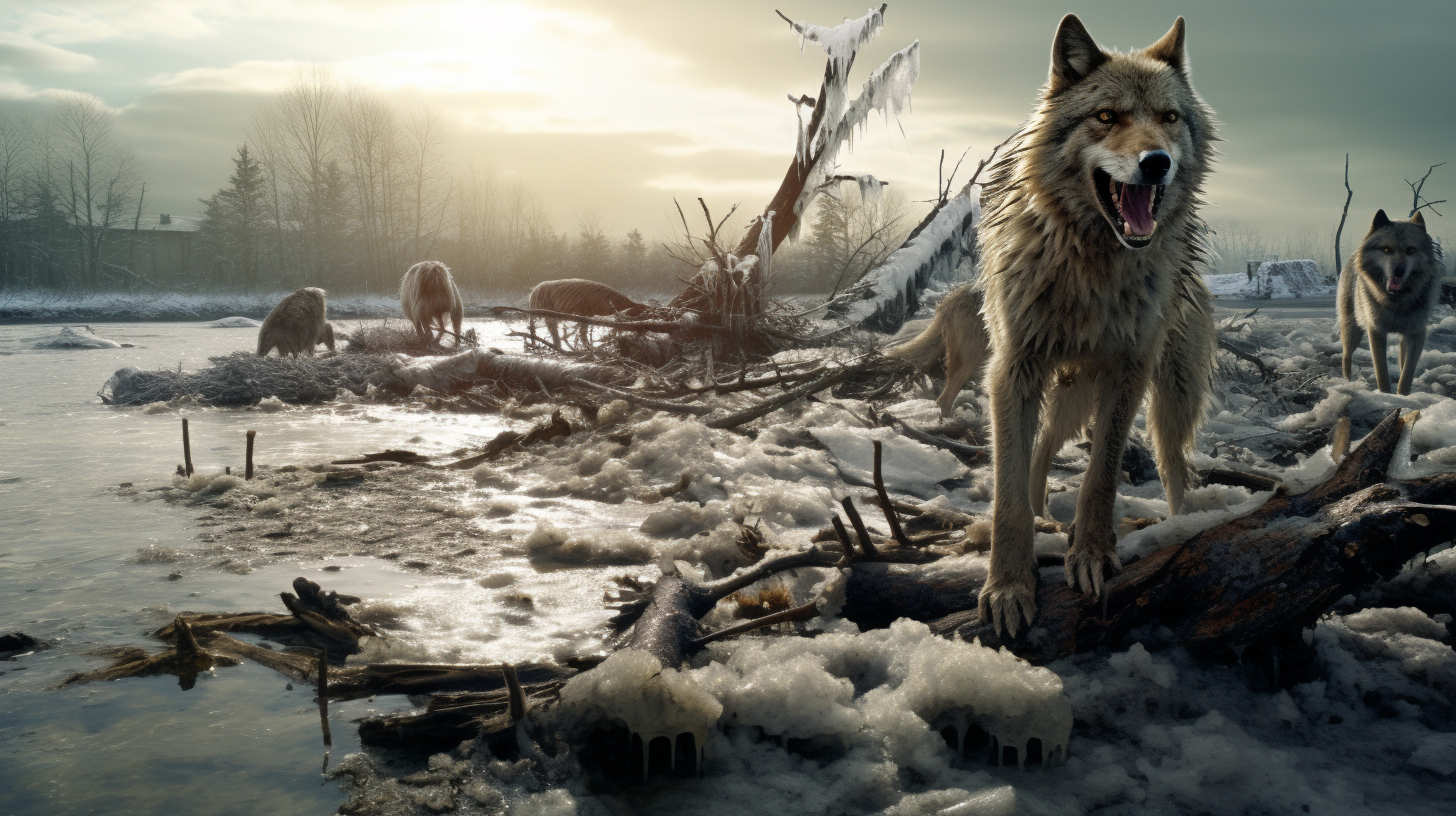As the midnight sun cascades over a once frozen landscape, the thawed grounds of Siberia echo with a rumble that reverberates through time. The permafrost, that icy time capsule preserving remnants from a bygone era, releases its grip on a history long buried beneath layers of ice and sediment. With a thaw hastened by our ailing planet’s fever, prehistoric predators entombed for millennia are emerging into the harsh light of the modern era.
The resurgence of these ancient behemoths is not the stuff of science fiction or paleontological fantasy; but a stark and burgeoning reality of climate change. Imagine, if you will, the Siberian cave lion, with a mane that bristles in the arctic breeze, and dire wolves, haunting the tundra with their feral gaze, now roam among us. These Pleistocene-era creatures, once sovereigns of the Ice Age, are finding their way back into an ecosystem that has long moved on without them.
Our recent discovery is that this newfound freedom is reshaping the food chains of the Arctic. Contemporary species, like the sparse herds of reindeer and the solitary Arctic fox, face novel and unpredictable challenges. The Arctic, already a theater of survival of the fittest, now stages a battleground across time, pitting evolution’s current champions against the ghosts of the Pleistocene.
What do these changes portend for the future of Arctic biodiversity? Experts warn of disrupted migration patterns and altered breeding grounds, but the more immediate problem looms with these primeval competitors’ appetites. They’re not just relics of the past but competent predators with instincts honed over eons, now unleashed upon an ecosystem already in flux.
To say that this turn of events is problematic is an understatement. Ecologists are ringing alarm bells over the synchronized dance of predator and prey that has been thrown dangerously out of sync. The unexpected insertion of ancient hunters into this fray could lead to rapid declines in prey populations, which could, in turn, have cascading effects throughout the ecosystem.
But let us not forget the role humans play in this ecological drama. As the Arctic becomes more navigable due to melting ice, human activities, from resource extraction to tourism, increasingly encroach on the fragile polar environment. The inevitable human-predator encounters that will follow could lead to tragic outcomes, for both beast and man.
However, all is not lost. The scientific community is looking at ways to preserve the ecological integrity of the Arctic. Research into potential wildlife corridors, conservation strategies, and studying the behavioral patterns of these newly emerging predators is ongoing. Education and awareness are also critical as humanity reckons with the implications of these environmental upheavals.
In closing, the idea that the ancient past can reemerge to confront the present is a powerful metaphor for the long shadow that climate change casts across our world. The release of these predators from the permafrost serves as a chilling reminder of the tenacity of nature and the unforeseen consequences of human-induced environmental change. Yet, even as the permafrost relinquishes its prehistoric prisoners, it poses a profound question: are we prepared for a world where the past and present collide?
